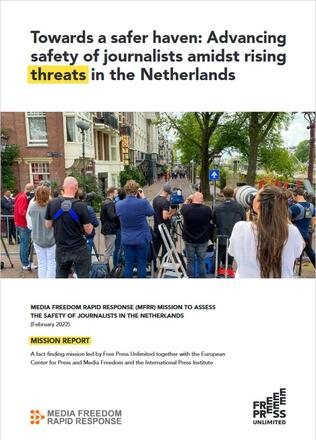
The Netherlands generally remains a safe haven for journalists and media workers. The pioneering PersVeilig mechanism is a key actor in ensuring and advancing journalists’ safety and is a noteworthy example of constructive cooperation and dialogue between the journalistic community and state authorities. Both symbolically and practically, PersVeilig makes it clear that attacks and harassment of reporters are not tolerated and are addressed collectively.
While the assessment of PersVeilig is overwhelmingly positive, both among the MFRR’s partner organisations and its interlocutors during the fact-finding mission, room for improvement remains in a number of areas. These include implementing agreed-upon protocols more consistently and ensuring the project's capacity and continuity.
Despite the relatively favourable conditions for press freedom and a pioneering mechanism, the MFRR mission confirmed that aggression against journalists is on the rise amidst a hardening of public debate and increasing polarisation in society. Subsequently, and despite the high willingness to cooperate between the journalistic community and law enforcement, the need remains to ensure a better understanding of the role of the press during protests, as well as changes to operational procedures to protect this role.
Certain categories of journalists suffer specific threats, particularly freelance reporters and women journalists. In this regard, it became clear throughout the mission that the Dutch approach to the safety of journalists lacks a gender lens. Moreover, while the Dutch policy approach scores well when it comes to putting in place mechanisms to protect journalists and prosecute offenders, there is room for improvement as concerns prevention.
Tags: Netherlands Safety of journalistsThe content of this article can be used according to the terms of Creative Commons: Attribution-NonCommercial 4.0 International (CC BY-NC 4.0) . To do so use the the wording "this article was originally published on the Resource Centre on Media Freedom in Europe" including a direct active link to the original article page.

